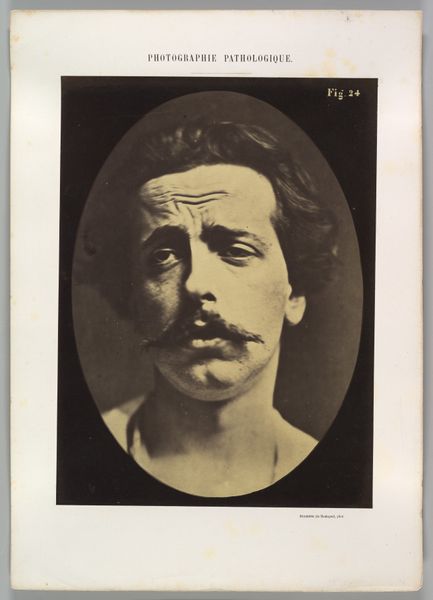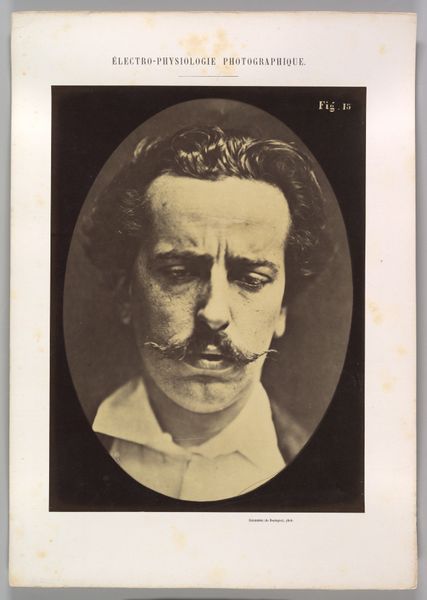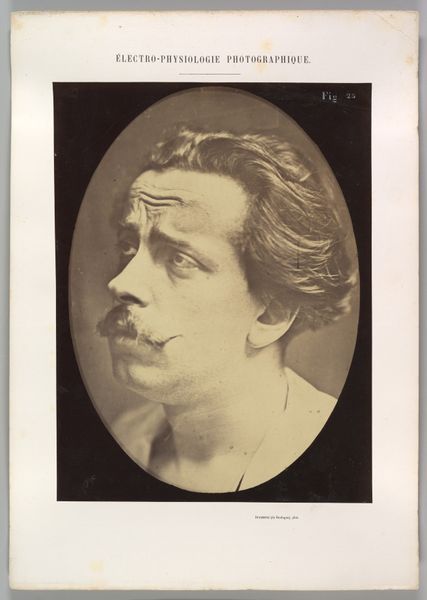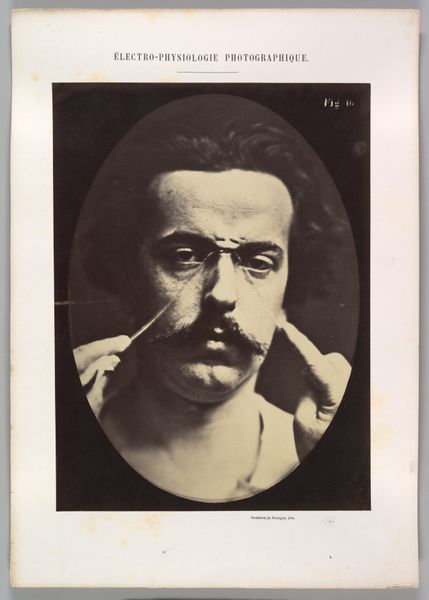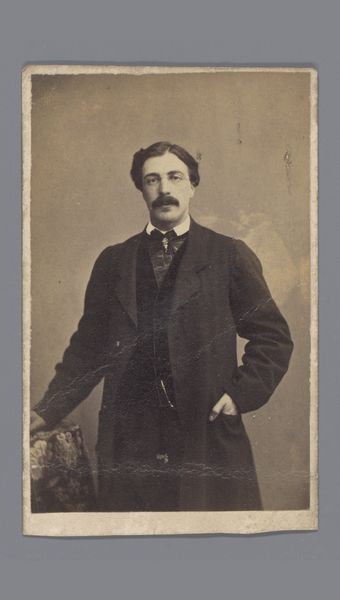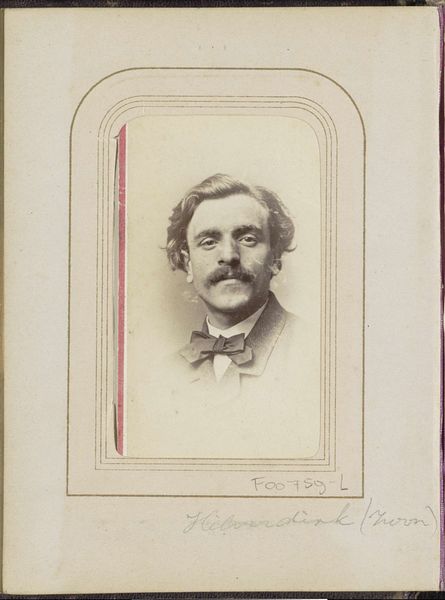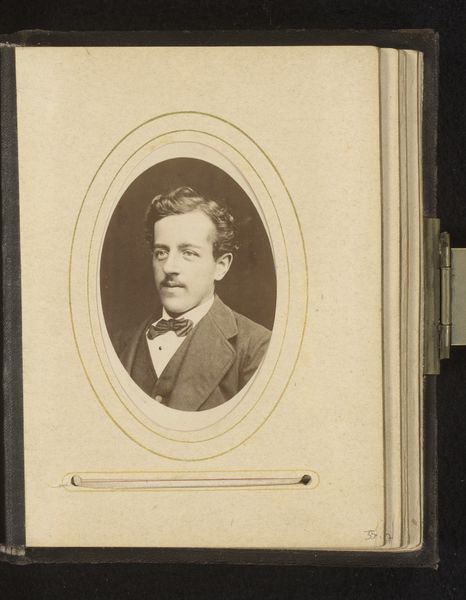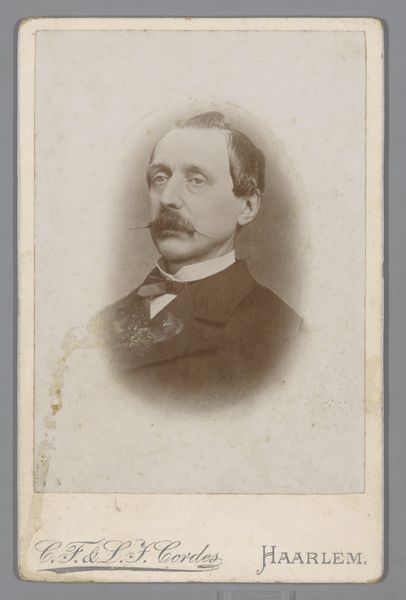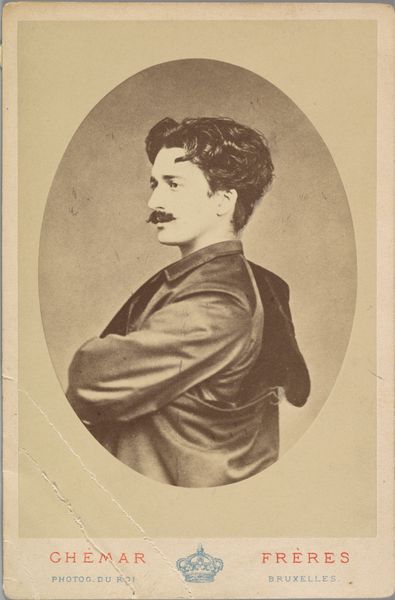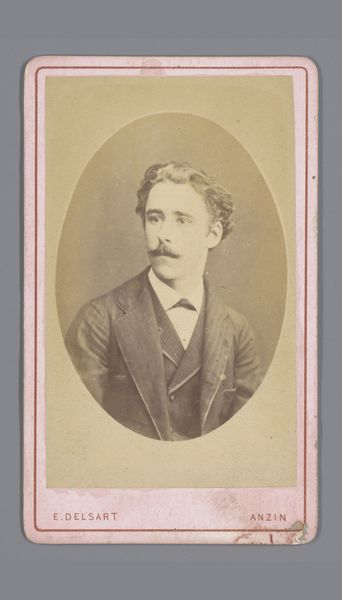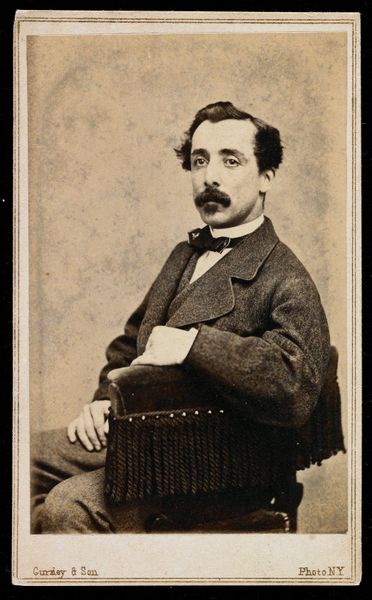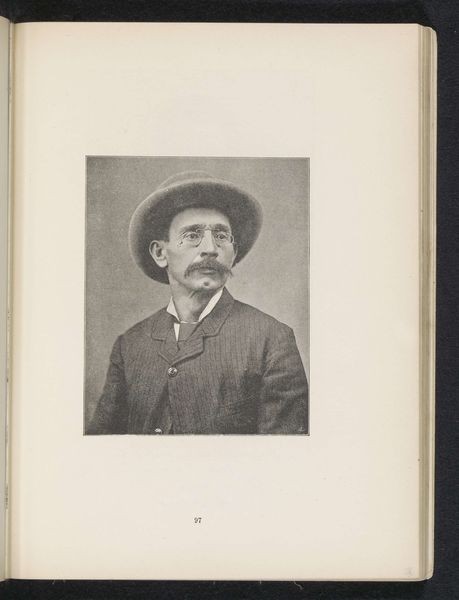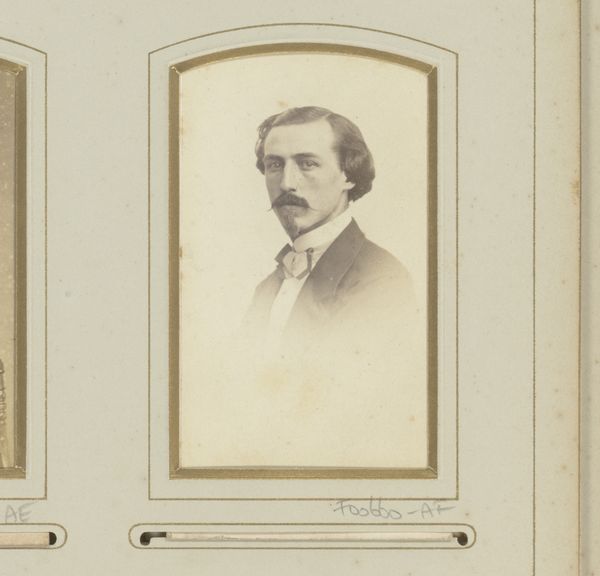
Figure 4: The face in repose of a young man 1854 - 1856
0:00
0:00
Dimensions: Image (Oval): 28.5 × 20.3 cm (11 1/4 × 8 in.) Sheet: 30 × 22.8 cm (11 13/16 × 9 in.) Mount: 40.1 × 28.6 cm (15 13/16 × 11 1/4 in.)
Copyright: Public Domain
This is Figure 4, a photograph of a young man in repose by Guillaume Benjamin Amand Duchenne. Duchenne was a 19th-century French neurologist who used photography to document his experiments on the physiology of human emotion. Duchenne’s work existed within the broader context of scientific positivism, an era in which scientists believed that knowledge should be derived from observation and experimentation. He sought to isolate and categorize the muscular contractions responsible for facial expressions, aiming to create a universal language of emotion, but also mapping the face, which has a loaded history of being gendered and racialized. These images raise some ethical questions for us today: Duchenne would stimulate the facial muscles of his subjects with electrical currents to produce specific expressions. By exploring the boundaries of portraiture, Duchenne's work challenges traditional representations of identity, inviting us to consider the complex relationship between science, art, and the human experience.
Comments
No comments
Be the first to comment and join the conversation on the ultimate creative platform.
